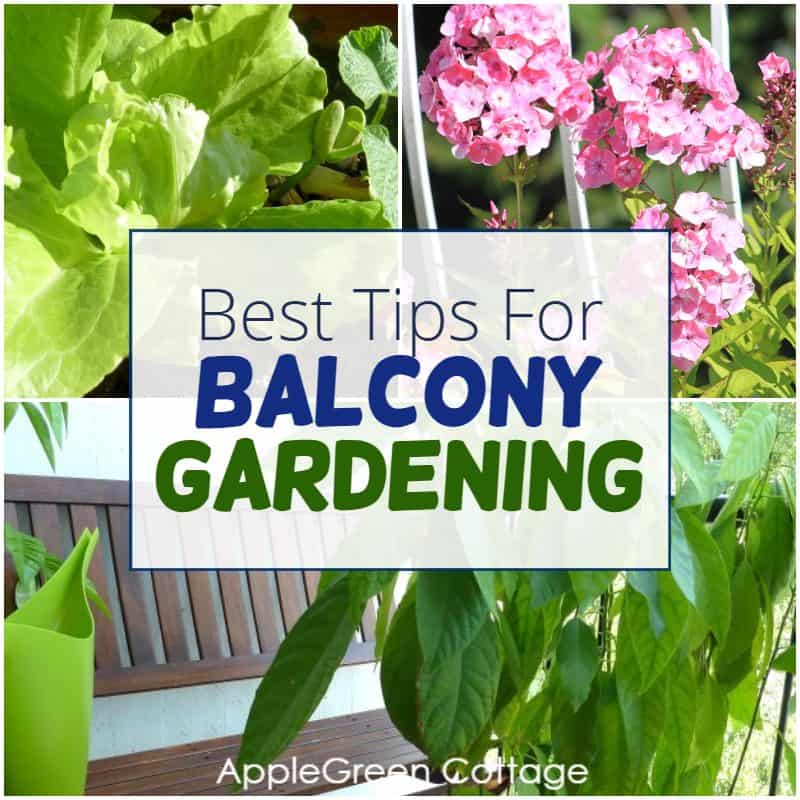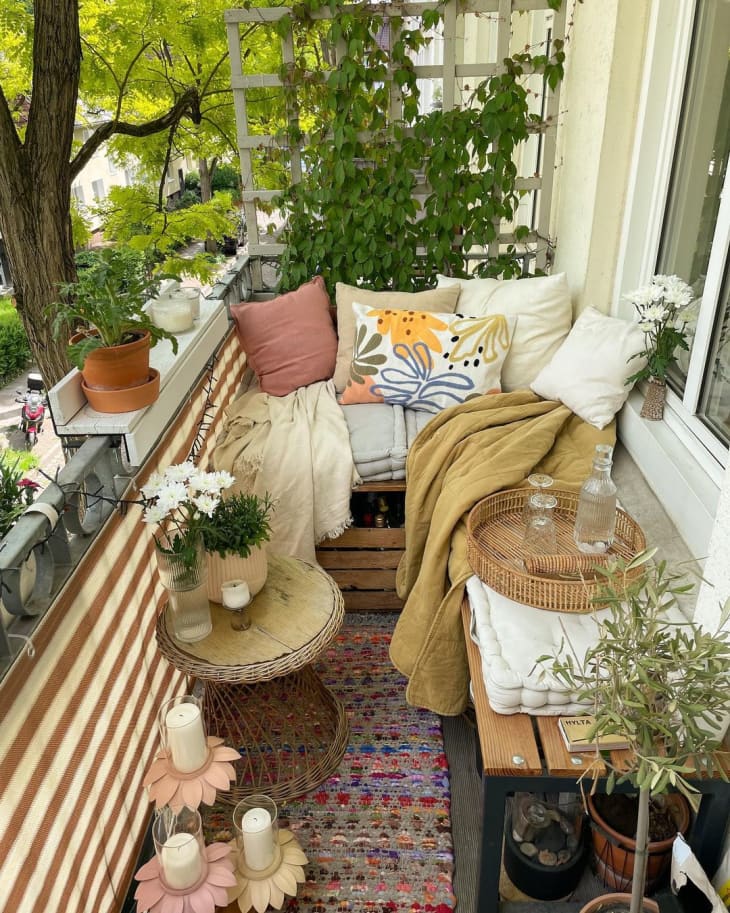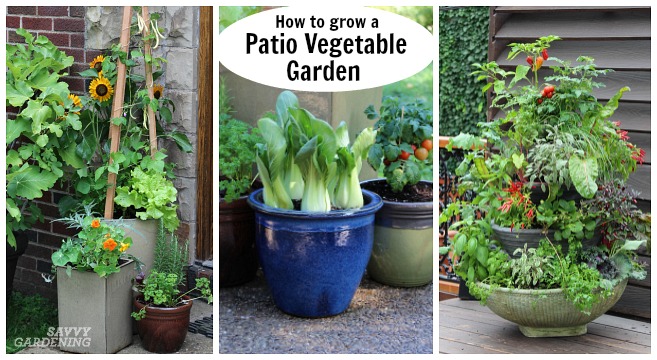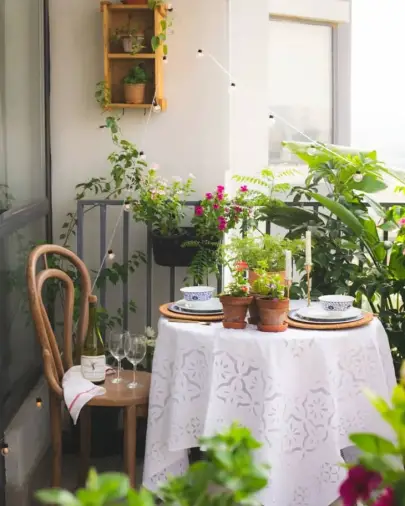Apartment balcony gardening allows beginners to cultivate plants in limited space effectively. This practice entails selecting suitable containers, plants, and soil to create a thriving garden oasis.
Creating a garden on your apartment balcony can transform your outdoor space into a lush, green retreat. It’s an excellent way to grow fresh produce and ornamental plants, even in a small area. Balcony gardening offers the joy of nurturing nature and the satisfaction of harvest, all from the comfort of your home.
Table of Contents
Whether you’re planting herbs, vegetables, or flowers, starting a garden on your balcony is an easy and rewarding endeavor for beginners. With the right approach, you can maximize your space, ensure adequate sunlight exposure, and select varieties that will flourish in pots and containers. Turn your balcony into a vibrant extension of your living area with some planning and care.

Credit: http://www.applegreencottage.com
Introduction To Balcony Gardening
Discover the joys of balcony gardening, a creative outlet for green thumbs living in apartments or with limited outdoor space. Transform your balcony into a productive and peaceful oasis with the right approach and know-how. Whether looking to cultivate a colorful array of flowers, a selection of culinary herbs, or fresh vegetables, balcony gardening offers a delightful way to connect with nature. Let’s embark on this journey to creating your very own urban garden, a step-by-step guide for beginners to help you turn that dreamy garden into reality.
Understanding Balcony Gardening Essentials
Balcony gardening comes with its unique set of considerations. To ensure your garden thrives, it’s essential to assess the space and understand the basics. This includes evaluating sunlight exposure, choosing containers and planters, understanding watering needs, and considering weight limits on your balcony. Select plants that match your environment and are suited to container living. Here’s a quick checklist for balcony gardening essentials:
- Assessment of light and shadow patterns
- Choosing the right soil mix for containers
- Proper drainage system for plant health
- Structural limitations and weight concerns
- Seasonal care for your plants
Benefits Of Growing Your Own Balcony Garden
Thriving amidst the bustle of city life, your balcony garden is more than just an aesthetic addition to your apartment. It is a source of fresh produce, improved air quality, and a habitat for pollinators. Among the multitude of advantages, here are some key benefits:
| Benefit | Description |
|---|---|
| Health and Wellness | Gardening is a therapeutic activity that can reduce stress and improve mental well-being. |
| Eco-Friendly | Contributes to a greener environment by cleaning the air and providing a haven for beneficial insects. |
| Freshness and Flavor | Harvesting home-grown herbs, vegetables, or fruits ensures peak freshness and unmatched flavor. |
| Educational | Learn about plant life cycles, nurturing, and the environment through hands-on involvement. |
| Space Efficiency | Make efficient use of limited outdoor space to grow a variety of plants, adding vibrant life to your living area. |
Begin your journey into balcony gardening today, and join a community of urban gardeners finding joy and fulfillment in growing their oasis.
Planning Your Balcony Garden
Embarking on apartment balcony gardening presents a unique set of challenges and rewards. Transforming a limited space into a thriving sanctuary of flora not only enhances the aesthetics of your urban living space but also offers a satisfying hobby full of growth and harvest. It all begins with a well-thought-out plan. Here’s how to start shaping your green oasis above the city streets.
Evaluating Space And Sunlight Availability
The first step in cultivating your balcony garden is to assess the space you have at your disposal. Begin by measuring your balcony to understand how much room you can dedicate to your garden. Consider not just the floor area, but also the vertical space for hanging planters or shelves. Balancing function with comfort is key—you’ll want to ensure there’s still ample room to move around and enjoy your outdoor area.
Understanding the sunlight your balcony receives throughout the day is crucial for the success of your plants. Track the hours of direct sunlight and note the intensity and heat associated with those hours. Use this information to align with the needs of potential plants, ensuring they’ll thrive in the conditions you can provide. Balconies facing south usually receive the most sunlight, while north-facing ones may be in partial or full shade, influencing your choice of plants significantly.
Selecting Suitable Plants For Balcony Conditions
- Determine your balcony’s sun exposure and select plants that match. Full-sun plants require at least six hours of direct sunlight, while shade-tolerant varieties can thrive with less.
- Consider the local climate and weather patterns. Windy conditions may necessitate sturdier plants or windbreaks to protect more delicate vegetation.
- Think about the maintenance levels you’re willing to commit to. Some plants demand more care and attention than others.
For beginners, starting with herbs and leafy greens can be a rewarding choice, as they are relatively easy to grow and maintain. Consider the following:
| Plant Type | Sunlight Needs | Maintenance Level |
|---|---|---|
| Herbs (Basil, Mint, Thyme) | Full to partial sun | Low to moderate |
| Leafy Greens (Lettuce, Spinach) | Partial sun to shade | Low |
Container Choices: Pots, Planters, And Window Boxes
Selecting the right containers is just as important as choosing the plants themselves. When it comes to balcony gardening, flexibility and efficient use of space are the names of the game. Pots, planters, and window boxes offer various options for optimizing your limited area.
Pots come in a myriad of sizes and materials. Clay and terracotta pots are porous, which allows for better air and water flow, but they can dry out quickly in full sun. Plastic and resin versions are lightweight and retain moisture well, but may not breathe as easily as other materials. Consider your plant’s needs before deciding.
Planters, including larger containers and raised beds, can hold a substantial amount of soil that retains moisture for longer periods, making them suitable for larger plants or multiple plantings. They can be made of wood, metal, or synthetic materials, each offering unique aesthetics and functional benefits.
Window boxes are perfect for making use of railing and wall space. They add a charming visual element and can be ideal for herbs, small flowers, and succulents. Be sure to secure them properly to handle the weight of the soil and plant material.
Whichever container you choose, ensure it has adequate drainage to prevent waterlogging and root rot. Additionally, account for the weight of your containers once filled—this is particularly important for balcony gardens where structural integrity is a consideration.
Getting Started With Your Balcony Garden
Embarking on the verdant journey of apartment balcony gardening can transform your outdoor space into a serene sanctuary, rich with life and color. Whether you’re craving homegrown herbs for your culinary creations or colorful flowers for aesthetic appeal, getting started is easier than you might think. This beginner’s guide will walk you through the initial steps to cultivate a thriving garden right on your balcony.
Step-by-step Guide To Setting Up Your Garden
- Evaluate your space: Measure your balcony and note the amount of sunlight it receives.
- Choose your plants: Decide on the plants that will thrive in your balcony’s conditions.
- Select containers: Pick pots and planters that fit your space and accommodate your plants’ growth.
- Arrange your garden: Organize the plants for optimal sunlight exposure and aesthetics.
- Assemble tools: Gather basic gardening tools such as gloves, a trowel, and a watering can.
Soil And Compost: The Foundation Of Plant Health
The success of your garden hinges on the quality of your soil and compost. Nutrient-rich soil supports healthy plant growth, while compost adds vital organic matter. Use high-quality potting mix tailored to your plants’ needs. Incorporate compost to nourish your plants and promote robust root systems.
Watering Strategies For Balcony Gardens
Consistent and appropriate watering is crucial for any garden, especially in the confined space of a balcony. Develop a watering schedule that aligns with your plants’ specific needs, factoring in climate and exposure. Utilize water-saving methods like self-watering planters or drip irrigation to maintain moisture without overwatering. In cases of limited drainage, be mindful to avoid root rot by allowing soil to dry between watering sessions.

Credit: http://www.apartmenttherapy.com
Maintaining Your Balcony Garden
Welcome to the green oasis of your balcony garden! Now that you’ve journeyed through the basics of setting up your vibrant little eden, it’s crucial to focus on nurturing these botanical companions. Maintaining a healthy balcony garden requires attention and care, but fear not, it doesn’t have to be a herculean task. Let’s dive into the essential care practices that will ensure your plants don’t just survive, but thrive in their high-rise haven.
Routine Care Tips For Thriving Plants
Providing consistent care forms the backbone of a flourishing balcony garden. Here are some routine care tips to keep your plants in tip-top shape:
- Watering: Plants in containers tend to dry out faster. Water your plants regularly, ideally during the cooler parts of the day to reduce evaporation.
- Feeding: A balanced, water-soluble fertilizer will provide essential nutrients. Administer every few weeks according to the product’s instructions.
- Pruning: Snipping off dead or yellowing leaves promotes healthy growth and can prevent the spread of disease.
- Monitoring: Daily observation helps spot issues early. If a plant appears stressed, investigate and adjust care as necessary.
Pest Control And Disease Prevention
One of the biggest challenges in balcony gardening is combating pests and disease. Here’s how to protect your cherished plants:
- Inspection: Regularly check the undersides of leaves and between joints for signs of pests.
- Natural remedies: Opt for organic solutions like neem oil or insecticidal soap to tackle infestations.
- Quarantine: Isolate new plants before introducing them to your garden to prevent the spread of pests and disease.
- Sanitation: Remove diseased foliage promptly and disinfect tools regularly to prevent cross-contamination.
Seasonal Adjustments And Plant Rotation
As the seasons change, so do the needs of balcony garden plants. Seasonal adjustments and plant rotation are necessary for a year-round vibrant display:
| Season | Adjustments | Plant Rotation |
|---|---|---|
| Spring | Introduce more sunlight as daylight increases. Start seedlings for summer. | Rotate evergreens and introduce new spring bloomers. |
| Summer | Provide shade during peak hours to avoid scorching. Increase watering frequency. | Add vibrant, heat-loving annuals. |
| Fall | Begin to reduce watering. Prepare plants for cooler temperatures. | Transition to autumnal plants that appreciate lower light. |
| Winter | Shield plants from harsh conditions. Consider bringing tender plants indoors. | Rotate in winter-hardy varieties or seasonal evergreens. |
Remember, the key to any successful garden, balcony or otherwise, spans beyond the setup—it’s the ongoing care that brings life to your space. Embrace these maintenance practices and watch as your balcony transforms into a flourishing refuge!
Maximizing Your Balcony Garden’s Potential
Transforming an apartment balcony into a flourishing garden provides not only a splash of greenery but a source of fresh produce and a serene retreat from the hustle of city life. Gardening in a smaller space requires creativity and strategy to maximize potential. Balcony gardens can be incredibly productive with the right approach. Below we’ll explore innovative techniques to get the most out of your limited space.
Creative Space Utilization: Vertical Gardening And Hanging Planters
Vertical gardening is a game-changer for those with limited floor space. Utilizing the vertical planes of your balcony will not only enhance its aesthetics but also increase your gardening area.
- Trellises: Equip your balcony with trellises for climbing plants like peas, beans, and some vine varieties of tomatoes.
- Wall-mounted planters: These free up floor space and can be used for a variety of herbs and smaller vegetable plants.
- Hanging planters: Perfect for trailing plants, they can be suspended from ceilings or walls, optimizing unused airspace.
Remember to consider the weight and water drainage in these planters to ensure a safe and sustainable garden environment.
Companion Planting And Maximizing Yield
Companion planting is a valuable technique that involves positioning plants together that benefit each other. This can result in healthier growth and higher yields.
- Marigolds can deter pests and are great companions for tomatoes.
- Basil enhances the flavor of peppers and tomatoes and can also repel insects.
- Lettuce can be grown in the shadow of taller plants to utilize space efficiently.
Planning is crucial; prioritize plants that can grow well together and utilize every inch of your balcony space to maximize your garden’s potential.
Enjoying The Harvest: Fresher, More Sustainable Eating
Savoring the vegetables and herbs from your balcony garden is not only rewarding but also contributes to a sustainable lifestyle. By growing your own produce, you reduce your carbon footprint and enjoy fresher, pesticide-free foods.
- Harvest leafy greens regularly to encourage new growth.
- Pick ripe vegetables promptly to stimulate further production throughout the season.
- Infuse everyday cooking with herbs picked straight from your garden for the freshest flavors.
Balcony gardening is an enriching endeavor that optimizes your living space, provides fresh produce, and offers a green refuge in the urban jungle. Start small, be creative, and watch your garden thrive.

Credit: http://savvygardening.com
Frequently Asked Questions Of Apartment Balcony Gardening For Beginners
What Are The Easiest Vegetables To Grow On Apartment Balcony?
The easiest vegetables to grow on an apartment balcony are lettuce, cherry tomatoes, spinach, radishes, and herbs like basil and cilantro.
Can You Grow Plants On Apartment Balcony?
Yes, you can grow plants on an apartment balcony. Choose suitable containers and plants that match the light conditions.
How Do You Start A Garden On A Balcony?
To start a garden on a balcony, choose lightweight containers and ensure proper drainage. Select plants suited to the balcony’s sunlight exposure. Use high-quality potting soil and plan for water access. Regularly maintain plants by pruning and fertilizing as needed.
How Do You Arrange Plants On A Balcony?
Arrange plants on a balcony by height, with taller ones at the back. Use vertical space with hanging pots and wall planters. Select suitable plants for the balcony’s light conditions. Ensure containers drain well to avoid waterlogging. Group plants with similar water and sunlight needs together.
Conclusion
Transforming your apartment balcony into a flourishing garden may seem daunting at first, but it needn’t be. Start small, choose suitable plants, and use space wisely. Embrace vertical gardening, opt for containers fitting your style and space, and most importantly, enjoy the process.
With patience, care, and a bit of creativity, even the coziest balconies can blossom into a green sanctuary. So grab your gloves, and let’s get those thumbs green—your urban oasis awaits!
(To know more about Small Space Rooftop Gardening Ideas : https://bonsainurserybd.com/5-small-space-rooftop-garden-ideas/)
